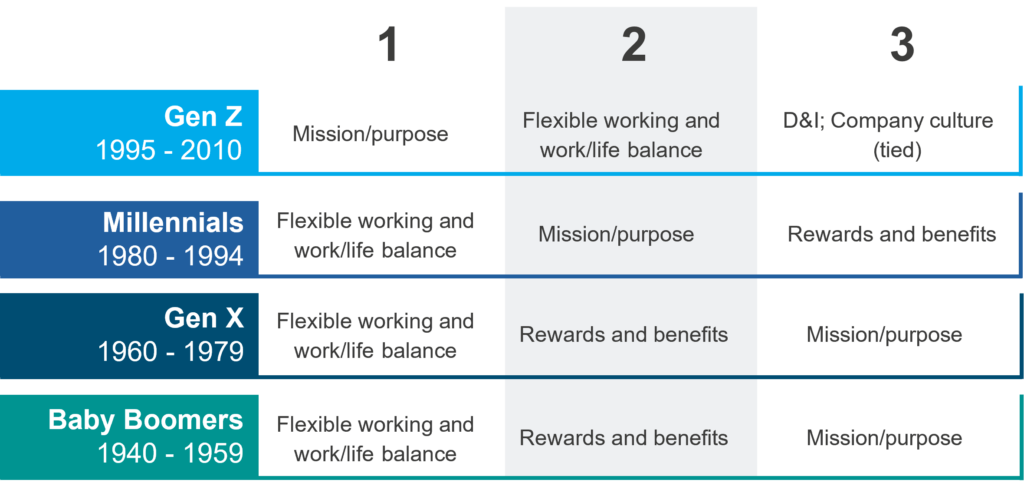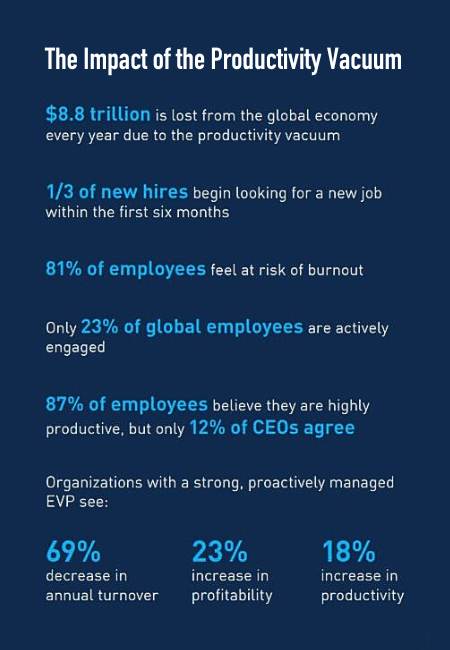By Simon Wright, Global Head of Talent Advisory
Let’s be real—crafting an authentic, compelling employer brand in today’s dynamic talent marketplace is no easy feat. With diverse candidate expectations and rapid digital disruption, even the most seasoned talent acquisition and HR leaders can slip up. Don’t fret if you’ve made some employer branding missteps along the way. To help you diagnose potential gaps, I’ve put together this handy list of 10 common employer brand mistakes.
These pitfalls can erode candidate trust, diminish your employer value proposition, and even cost you top talent. Learn from other companies’ miscues to refine your brand messaging and employee experience. The key is course-correcting before your employer brand perception deteriorates further. Let’s dive in!
1. A One-Size-Fits-All Approach
Companies often craft a single, broad message, expecting it to resonate with everyone. In our diverse world, nuanced tailoring to different demographics, cultures and backgrounds is far more impactful.
By evolving your employee value proposition (EVP) into a dynamic, human-centric personal value proposition (PVP) you embrace a flexible approach that addresses employees’ diverse needs and aspirations as unique individuals, not just workers. The PVP does not replace the EVP; rather, it evolves it. It’s not just about being an attractive employer. It’s about enabling each individual to realize their full potential, and in doing so, empowering your organization to thrive in an increasingly competitive and complex landscape.
Learn how to evolve your EVP to a human-centric PVP and increase productivity 23%.
2. Overlooking Employee Voices
Employers sometimes mistake professional aesthetics for authenticity, sharing polished, yet hollow messages. In today’s world of TikTok and Instagram, your talent craves real talk and real storytelling. At the end of the day, facts and stats don’t connect like stories do—whether it’s through videos, podcasts, blogs or social media posts.
One of the most effective ways to manage perception and shift views is through showcasing real-life employee experiences, achievements and testimonials to highlight the positive aspects of your workplace. PeopleScout’s recent research, Inside the Candidate Experience, found that 35% of organizations don’t feature their real employees on their career site. Yet, 86% of candidates say they value stories from employees and that it helps to influence their job search.
Employee testimonials can provide the most candid and compelling insights about a company and are one of the best ways to inject authenticity into your employer brand. So, put your people first, and let their journeys within your organization take center stage. Leveraging employee advocates in your employer brand and candidate attraction content will help you grab hearts and stand out from the competition.
3. Static Branding in a Dynamic World
The pandemic was a major shift that changed people’s perspectives on work. The Great Resignation shook things up even more, with workers now expecting a lot more from employers when it comes to meaningful work, development opportunities, work-life balance and flexibility. However, many organizations are still relying on the same old pay and perks-focused EVPs that just don’t inspire today’s talent anymore, leading to low engagement and high turnover.
Companies that define their employer brand—but don’t revisit and revise it periodically—risk appearing out of touch or stagnant. If your organization hasn’t updated its employer in the last three years, you’re overdue.
4. Overemphasis on Perks, Under-Emphasis on Purpose
Modern employees, especially younger generations, often prioritize purpose and impact over perks. Our research shows that half (50%) of candidates say an organization’s mission and purpose are key influences on their decision to apply. Yet, less than half of employers show information about the organization’s mission, purpose or values on the career site. Companies that solely highlight surface-level benefits may miss attracting deeply committed talent.
Top Considerations When Looking for a new Job by Generation
Candidates want fulfilling employment and a company that upholds their values. By not featuring this information on your career site, you’re passing up an opportunity to create an emotional connection with your talent audiences.
I know what you’re thinking—why not just direct candidates to where this information is on our corporate site? Here’s the thing: the second you send applicants somewhere else, you risk losing them. They may never make it back to actually submit an application. Instead, make things seamless by keeping the candidate journey in one place. The more you immerse talent in an experience right on your career site, the more likely they’ll envision themselves at your organization and apply for a job.
5. Over-Promising, Under-Delivering
Brands sometimes craft a compelling and aspirational image, but if the day-to-day reality doesn’t match, it can lead to disillusionment and distrust among employees.
The number one obstacle for candidates when it comes to applying is not knowing what it’s like to work at an organization. So, brands that can show candidates what their day-to-day tasks will look like in a role will see more applications and higher-quality candidates. Consider creating videos that show a diverse range of your employees in their real work environment so candidates can see themselves in the role and at your organization.
6. Neglecting Feedback Loops
Not establishing mechanisms to gauge how the employer brand is perceived internally and externally leaves companies blind to misalignments or areas of improvement. Different workforce segments—full-time workers, contingent workers, working parents, employees just starting their careers and those considering retirement—all have diverse needs. So, involving employees in the EVP development process is a great way to ensure their voices are heard and their perspectives are considered.
Conducting focus groups, workshops or surveys to gather employee input and insights will help you understand how to tailor your EVP to these unique segments. This collaborative approach fosters a sense of ownership and buy-in among employees, increasing their engagement with the EVP and creating a crucial step toward achieving a PVP.
7. Not Addressing Negative Perceptions
Ignoring negative reviews on platforms like Glassdoor can further erode trust. A proactive, open approach of responding to reviews is one of the most important ways to create a strong brand presence on employer review sites.
Leaving thoughtful replies demonstrates maturity and commitment to growth and is guaranteed to show candidates and employees that you care—regardless of whether the feedback is positive or negative. In fact, according to a Glassdoor survey, 62% of job candidates agree their perception of a company improves after seeing an employer respond to a review.
8. Lacking Cultural Competence
Global brands must recognize and respect the cultural nuances of the regions they operate in. A message that resonates in one culture might misfire or even offend in another. A lack of cultural literacy in your employer brand can lead to confusion among your talent audiences, making it more difficult to recruit top talent.
When it comes to your global talent strategy, it is important to work with local employees to build an employment brand that is effective across the world. Plus, you want to ensure that your recruitment marketing campaigns are culturally appropriate in each region. This could even include leveraging different social media sites which can have varied relevance for employer brand recognition and job searches from country to country.
9. Failure to Integrate Your Employer Brand Across Touchpoints
An employer brand isn’t just about recruitment ads or company websites. It should be integrated into every employee touchpoint, from onboarding to training to exit interviews.
Every aspect of your employer brand—from voice to visuals—should capture the essence of life at your company. When candidates see your brand personality reflected everywhere, it builds trust. They don’t just hear you boast about culture fit and experience—they feel it through every interaction. So, let your employer brand shine through in big and small ways on your career site, social posts, job descriptions and more. Candidates will gain confidence that your employer value proposition rings true if you walk the walk at every step.
10. Ignoring the Role of Middle Management
While top leadership plays a role in defining the brand, it’s often middle management that has the most face time with employees. They translate your employer branding into daily reality. If they aren’t aligned with the brand message or don’t embody its values, the EVP can quickly fall apart as employees recognize the inconsistencies between branding and behavior.
Managers should undergo employer branding training. When the entire management chain fully buys into the brand promise, managers can activate it for both employees and candidates. With alignment from executives to front-line supervisors, your employer brand transforms from buzzwords into actual company culture.
PeopleScout Can Help You Avoid Employer Brand Mistakes
Avoiding common employer brand mistakes takes dedication, but the rewards are well worth the effort. By sidestepping these pitfalls, you’ll craft authentic and human value propositions, strengthen candidate connections and build an employer brand that is flexible enough to speak to a variety of talent audiences.
PeopleScout’s award-winning in-house Talent Advisory team has fresh ideas to help you evolve your employer brand. Contact us today to get help with your toughest challenges.




